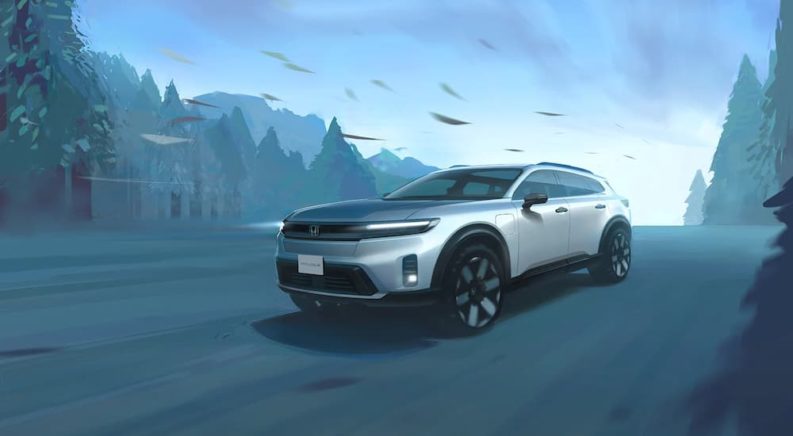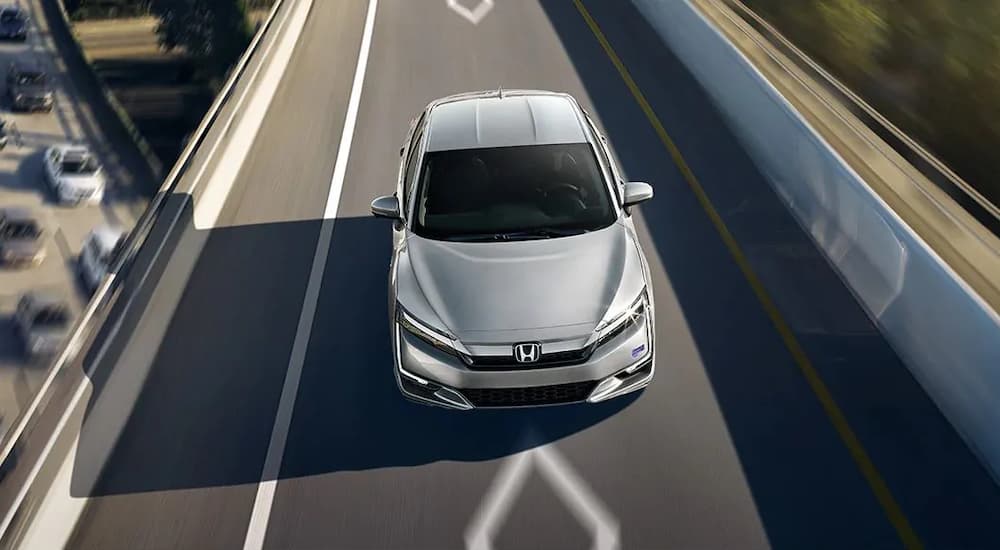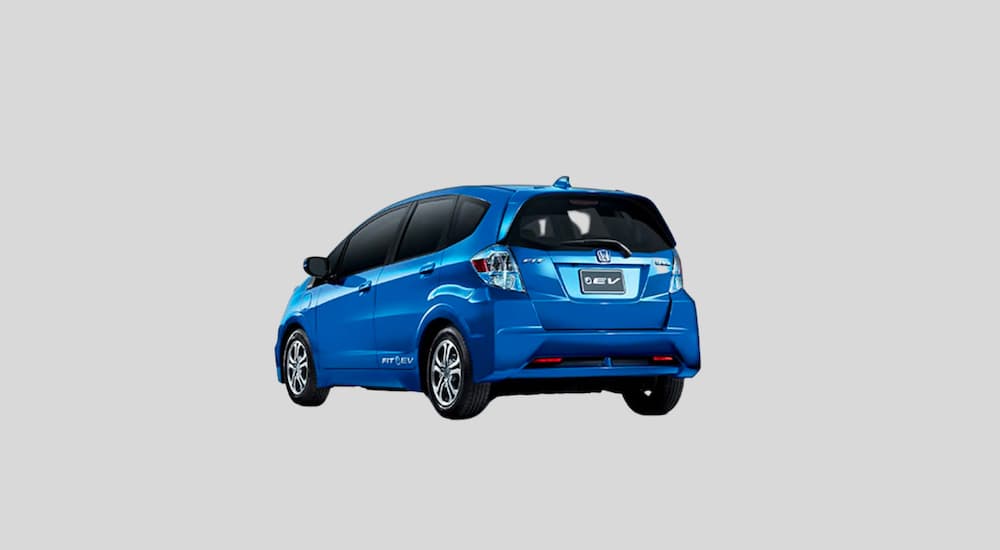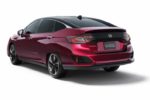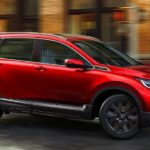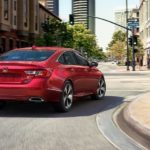It seems nowadays that every manufacturer is trying to get in on the race to build electric vehicles for the masses, and Honda is one of the latest entries with its upcoming 2024 Honda Prologue SUV. But there is something you may not know––electric vehicles are nothing new. The reason why it may feel so new is that only now are we seeing an actual race to achieve the best electric vehicle on the market––a race that seemingly every manufacturer has been entering. However, some manufacturers have been in the game longer than you think, including Honda.
If you’re interested in used car sales, then you may be intrigued to learn about some of the electric vehicles that have gone under the radar. Or, for the younger readers out there, you may have never heard about some of these EVs by Honda. Don’t worry if you haven’t––the first Honda EV was exclusive to Japan. Anyways, where did it all start? What was the first Honda EV? We’ll get to all of that, but first, let’s take a trip down memory lane to a time when Def Leppard was on top of the world, Microsoft was slowly becoming the conglomerate it is today, and MTV had music––bizarre, right? That’s right, time to travel back to the ’80s, baby. We’ll be looking through the past, present, and future of Honda’s foray into EVs. I know that A Christmas Carol is nearly a century old, and it probably won’t be Christmas when you’re reading this, but just bear with me, okay?
Ghost of Honda’s Past
Like anything, the path to EVs wasn’t straightforward and involved numerous meetings over many years, comprising a majority of Honda’s hierarchy. To set the stage, Honda was doing business as usual, and business was booming. The ’80s was a successful decade for the manufacturer, and Honda had just opened its first manufacturing plant in America around this time. The automotive industry, like today, has never been at a stand-still; innovation is the name of the game. Innovation promotes competition, and more competition means consumers get the best products available. That, and it’s fun to watch two manufacturers dish it out for superiority.
So, it was 1987, and one man named Junichi Araki was reading a magazine. This wasn’t just any magazine, mind you––this was about the potential of solar panels. More specifically, solar panels in the automotive industry. Intrigued about the potential, Araki knew this could be the answer to Honda’s lingering problem: how were they going to change the game for the turn of a new millennium? It wouldn’t be easy, but Araki knew that he needed to convince the big wigs that this would be the future of Honda.
Although skeptical at first, the higher-ups at Honda formed a four-man team to begin looking into how this would all work. To give you an idea of how long of a process this would take, Honda’s first production electric vehicle, the EV Plus, wasn’t released until 1997, a decade after the first meeting. The EV Plus wasn’t a widespread success, with only a few hundred produced, and it was only sold in Japan. Fun fact: after kickstarting Honda’s EV development, Junichi Araki went on to become CEO of Honda Aero, Inc––the subsidiary of Honda that builds jet engines.
The Honda EV Plus couldn’t have arrived at a better time, as Toyota had released the Prius the same year, so competition was ripe for the taking. The EV Plus was undoubtedly a small step on a greater journey, but it set the stage for Honda to be known as one of the few manufacturers that had developed, produced, and released a fully-functional electric vehicle by that point. However, as attention shifted to hybrids, it would be some time until the next Honda EV would appear.
Ghost of Honda’s Present
The next Honda EV to release after the EV Plus wouldn’t hit the market until 2008. But the Honda FCX Clarity wasn’t like most of the electric vehicles we have today. The main difference between the FCX Clarity and modern EVs is that the FCX Clarity uses hydrogen fuel cells instead of batteries. In 2008, this was the right move as battery tech still wasn’t ready for prime time, but fuel cells are now being phased out thanks to improvements in battery technology. However, Honda continues its research into maximizing the potential of fuel cells to this day.
Fast forward a bit to 2016, and Honda would release the Clarity Electric, which replaced the original fuel cells with a 25.5 kWh lithium-ion battery pack. The next year, Honda introduced the Clarity Plug-in Hybrid, making up for the relatively short range of the Clarity Electric. This presented a shift for the Clarity since it was now the ultimate EV with three separate types of electric powertrains: Plug-in Hybrid, Fuel Cell, and the pure battery powertrain. The Clarity Plug-in Hybrid variant combines its electric motor with a 1.5L I-4 gasoline engine, making it arguably the best of the bunch with its 42 MPG fuel economy and 48-mile electric range.
Stepping back for a moment––after the original FCX Clarity was released, the Fit EV was produced in 2012, which was in many ways the spiritual successor of the EV Plus that we discussed earlier. It’s amazing how many advancements were made over just 15 years, and it was interesting to see the original concept be reutilized for a new generation in an entirely new market. However, there was one problem, and that was what can now be considered abysmal range, even when operating on a fully-charged battery.
Performance wasn’t an issue, as its battery and motors combined to make 134 hp and 189 lb-ft of torque. Not the best, but still respectable given the point in time, the size of the EV, and other factors that had a hand in it. How bad was the mileage range? Well, on one full charge, you’d get 82 miles. Yeah, not great. With this kind of mileage, road trippers were best left with one of Honda’s other offerings, or even the non-EV variant of the Honda Fit, which came with a decent 1.5L four-cylinder engine with rather impressive fuel efficiency ratings of 28 MPG city and 35 MPG highway.
Ghost of Honda’s Future
The Future of Honda EVs looks anything but grim. As mentioned, Honda continues to perfect its electric powertrains, and that one magazine Junichi Araki read back in 1987 has brought us to where we stand today. Honda’s not slowing down either and is just getting started. Whether it’s fuel cells or battery electric vehicles, Honda hopes these electrified models will make up 66% of its market share by the turn of the decade.
Given what we already know about Honda’s plans, then there’s no reason to not be excited. For example, Honda recently announced the Prologue, which is slated to become the first electric SUV developed by the manufacturer. The Prologue will arrive for the 2024 model year, and its design looks like a mixture of familiar Honda philosophies combined with this new age of sleek and stylish electric vehicles. The Honda e is another electric vehicle being built by Honda, but this cute subcompact is only for overseas markets, so chances are that you won’t be driving one. With the way things are going, it’s not too far-fetched to imagine we may see over a dozen new Honda EVs released over the next decade. I don’t know about you, but that sounds great to me.

